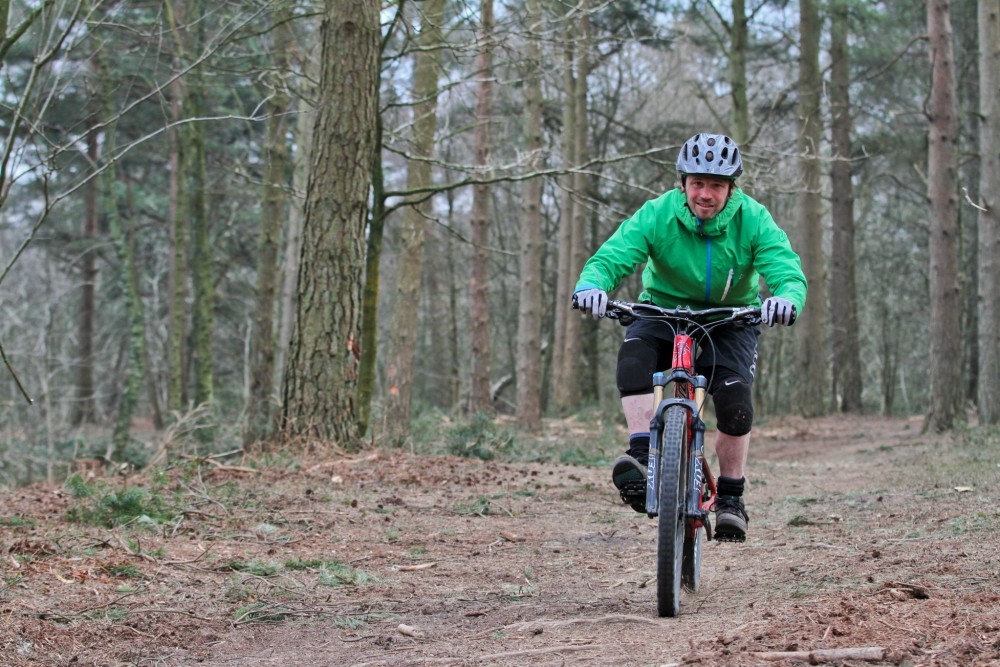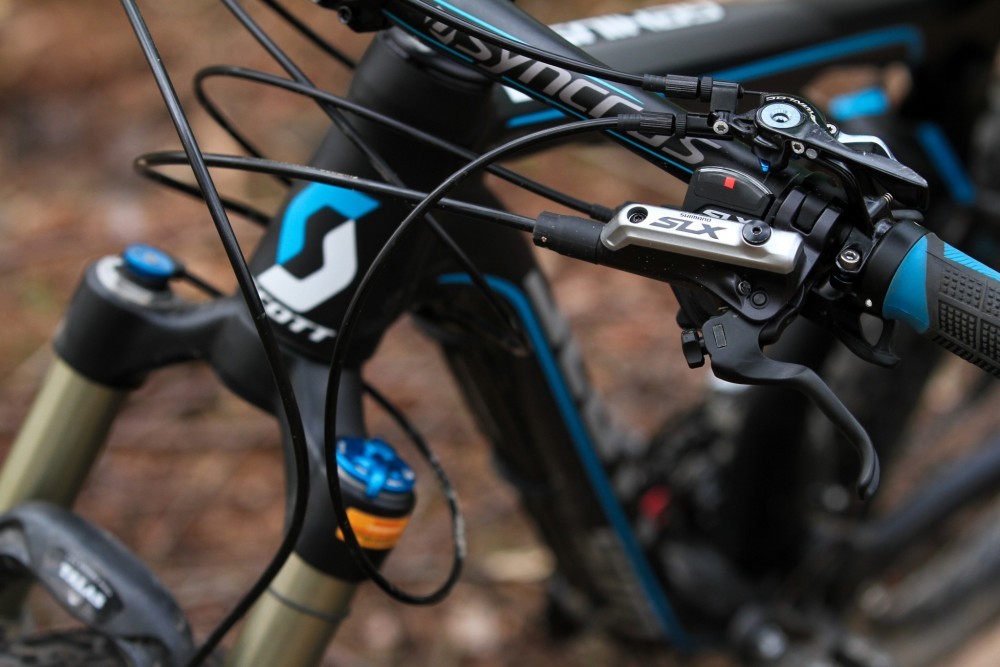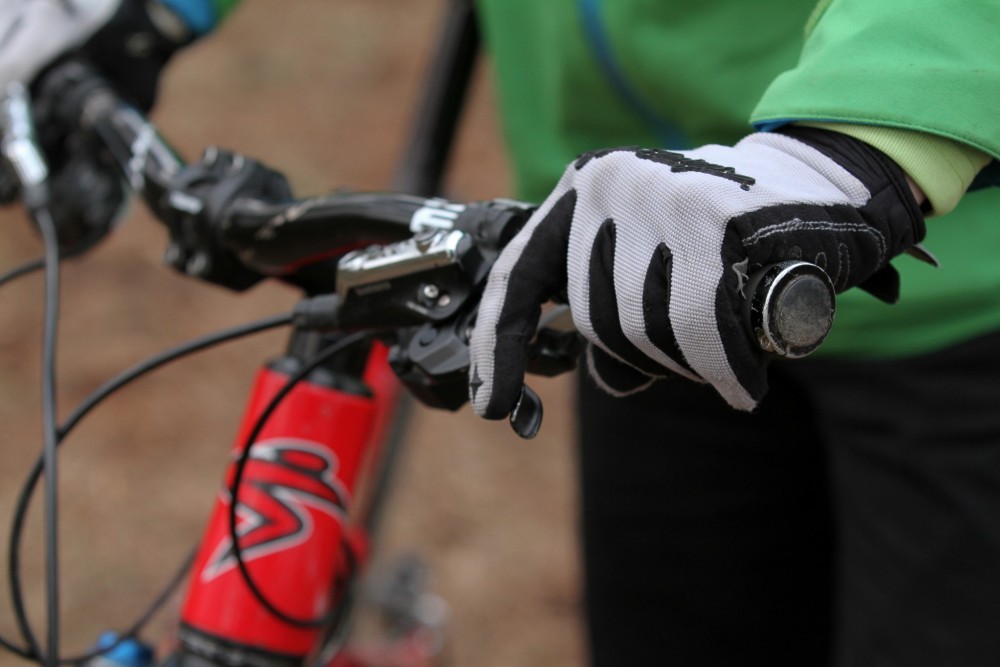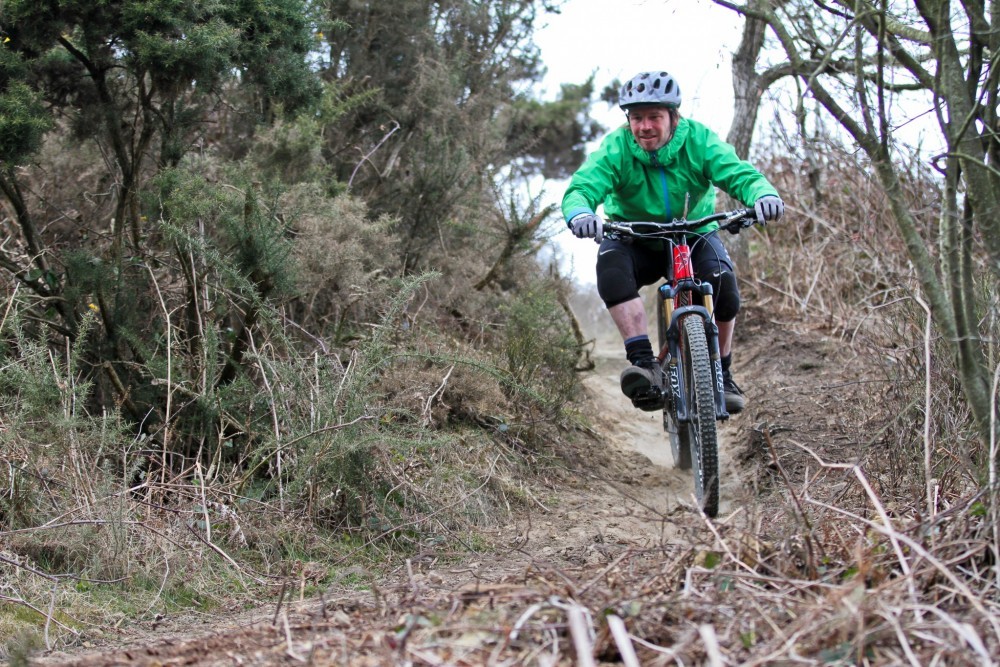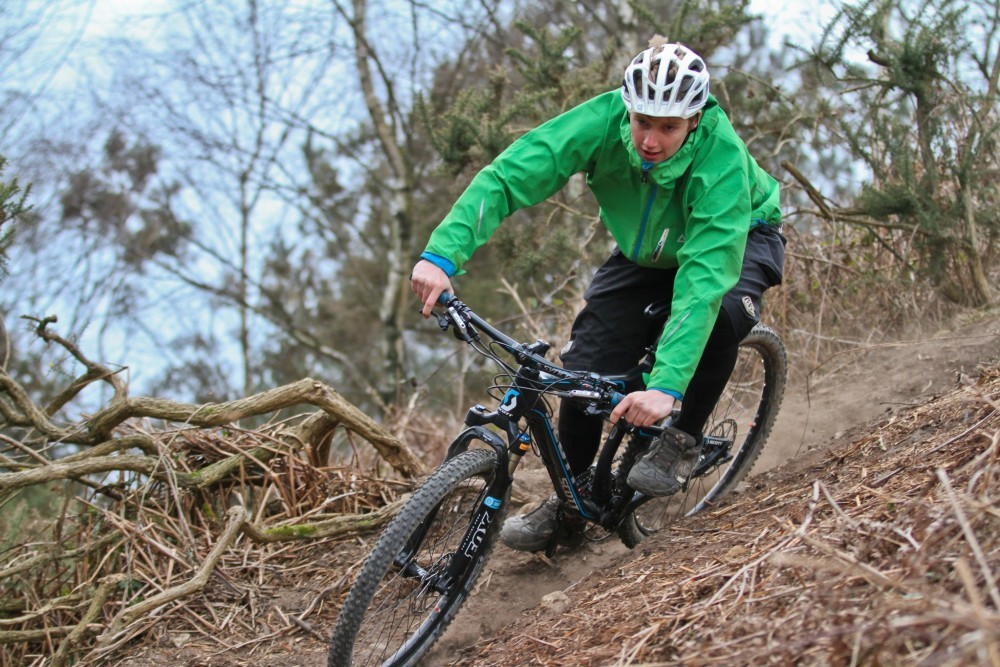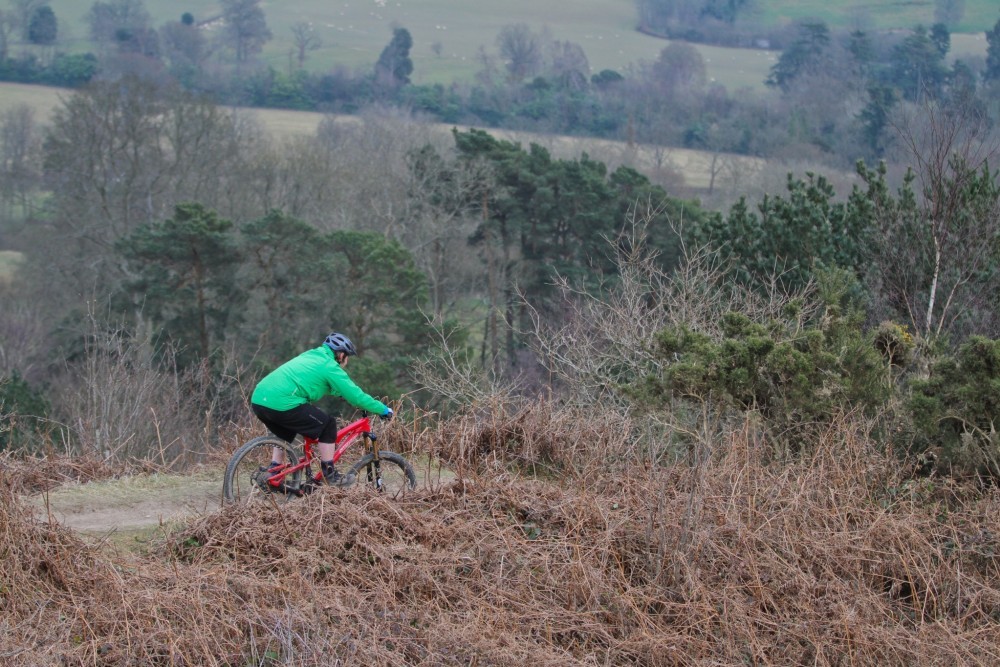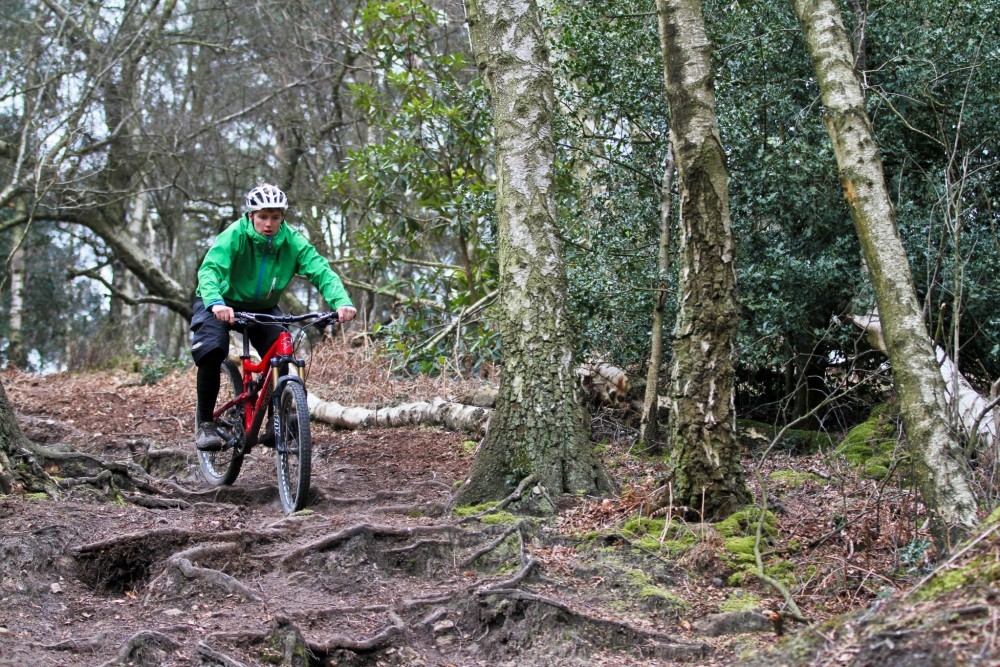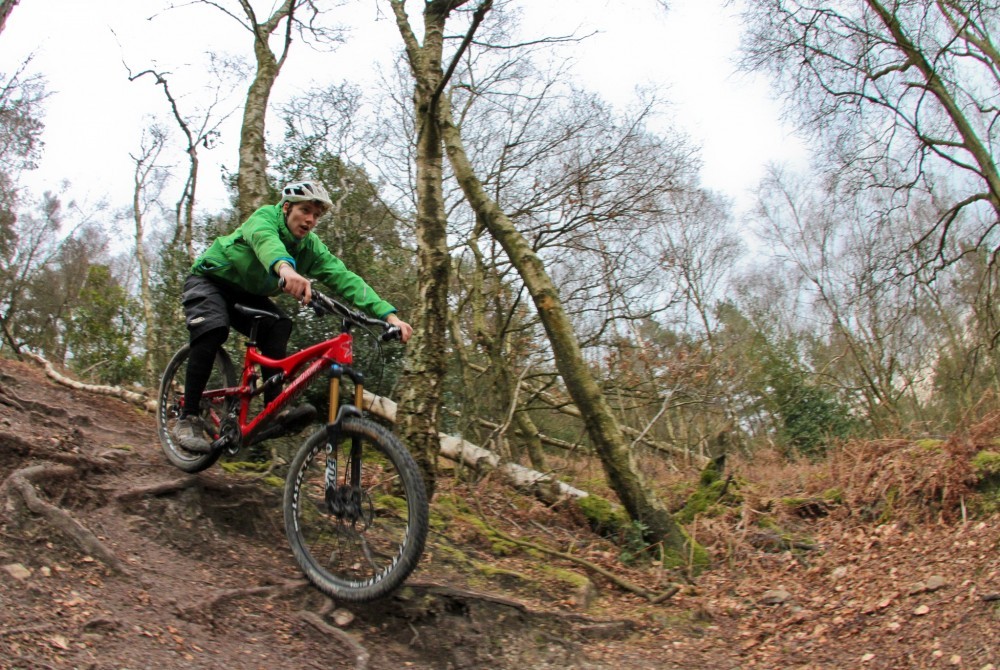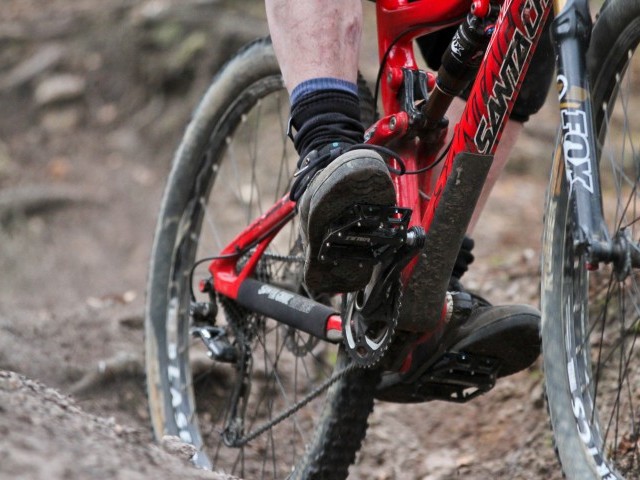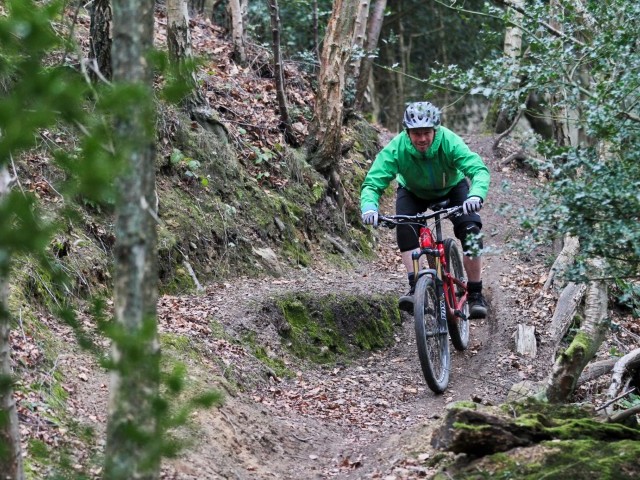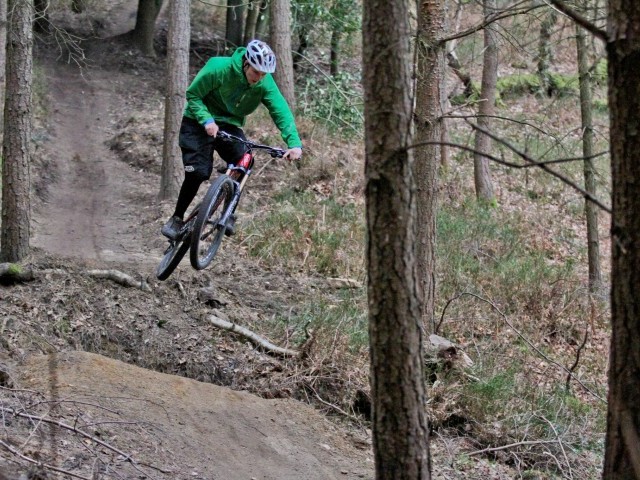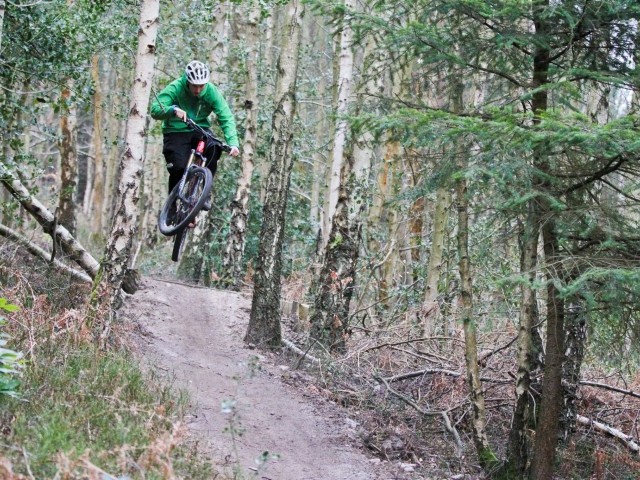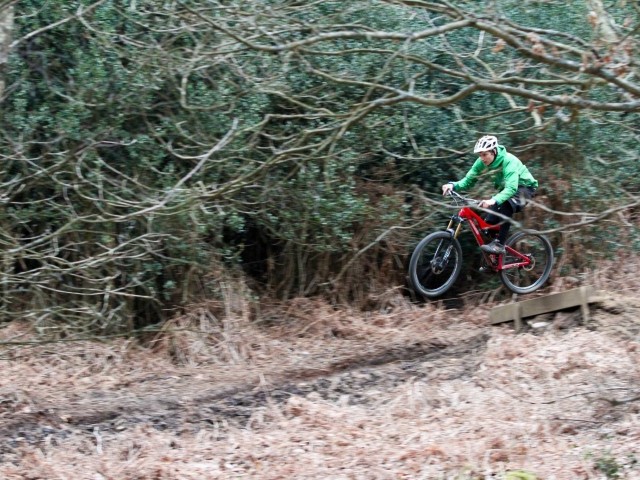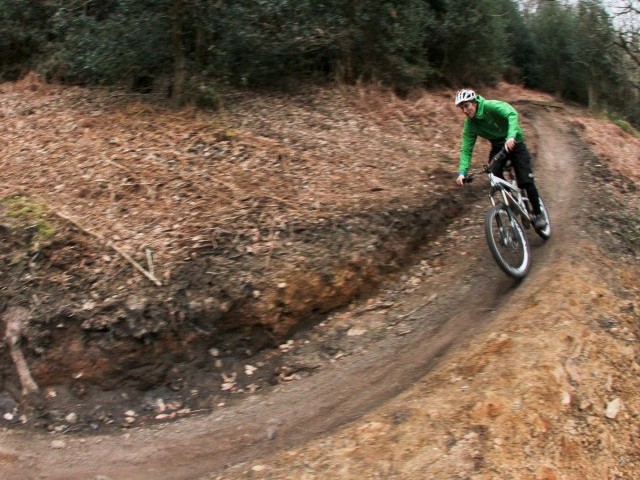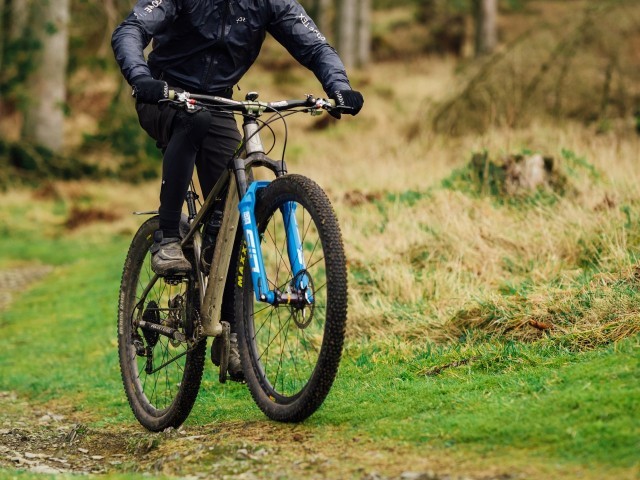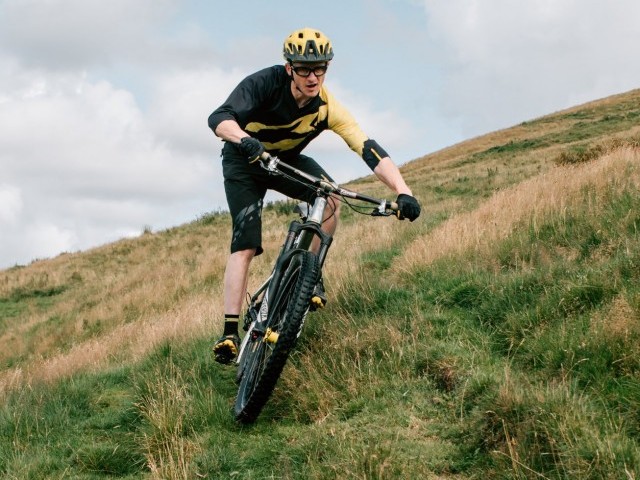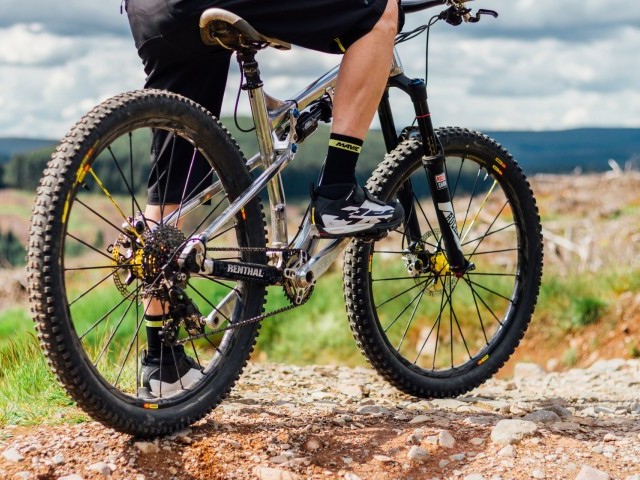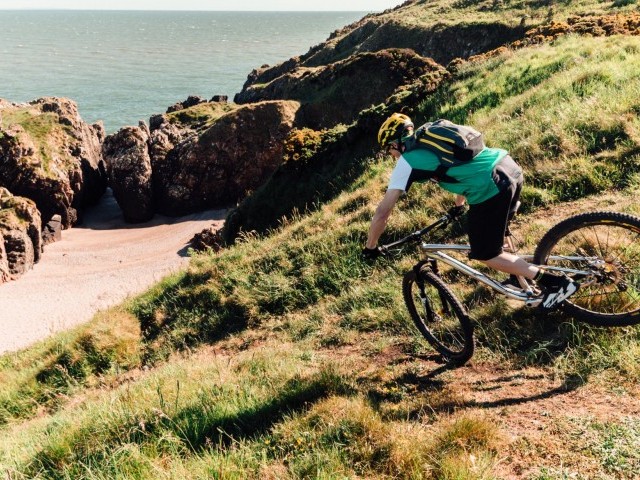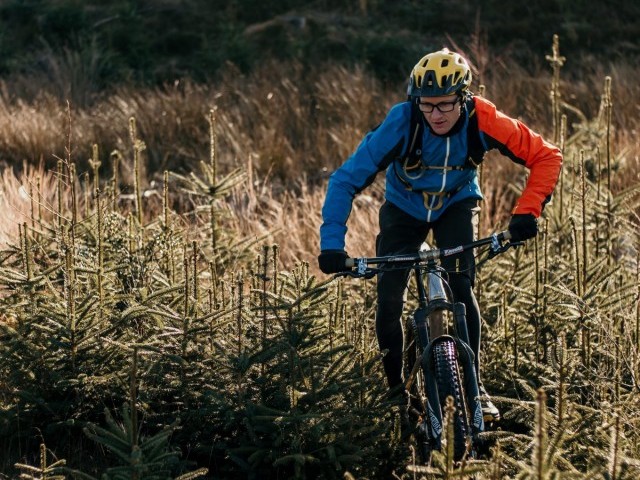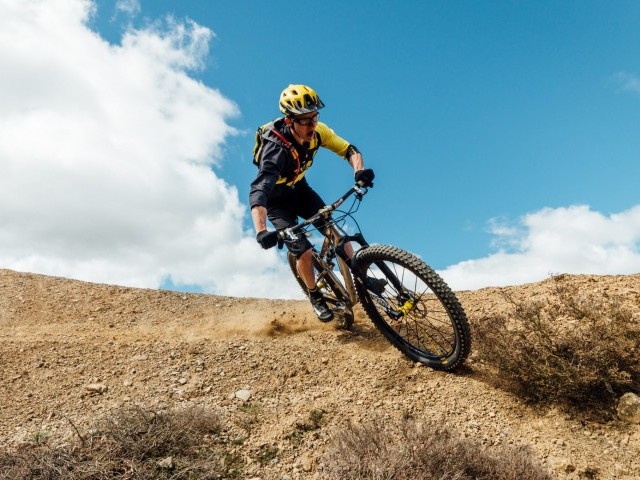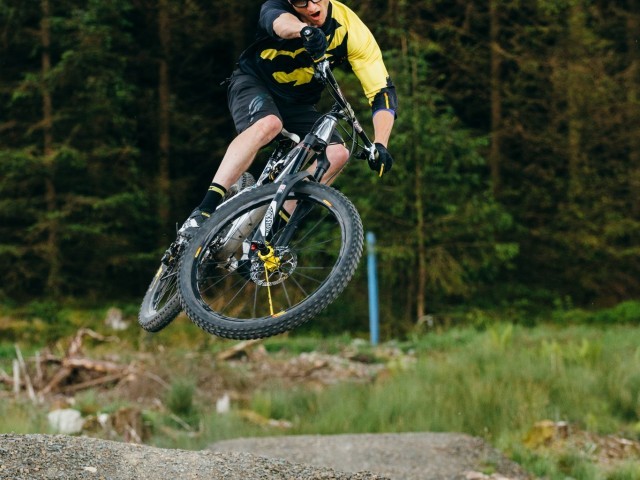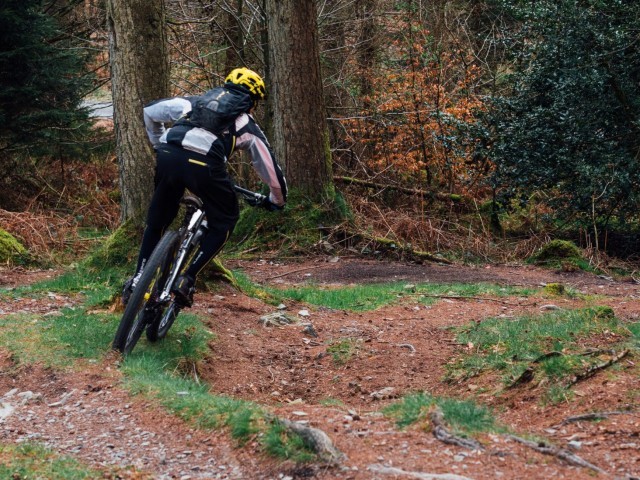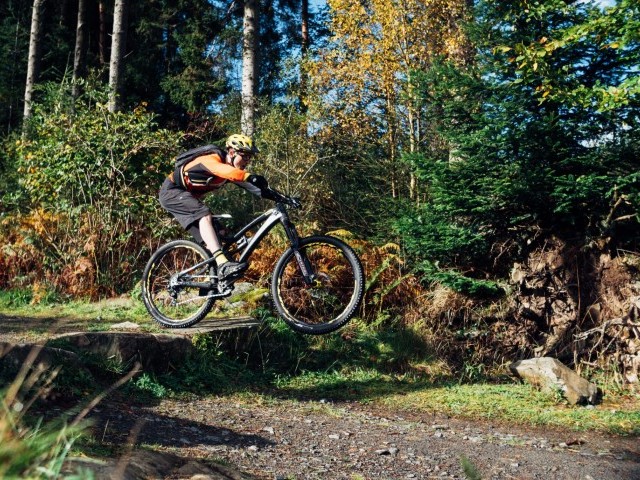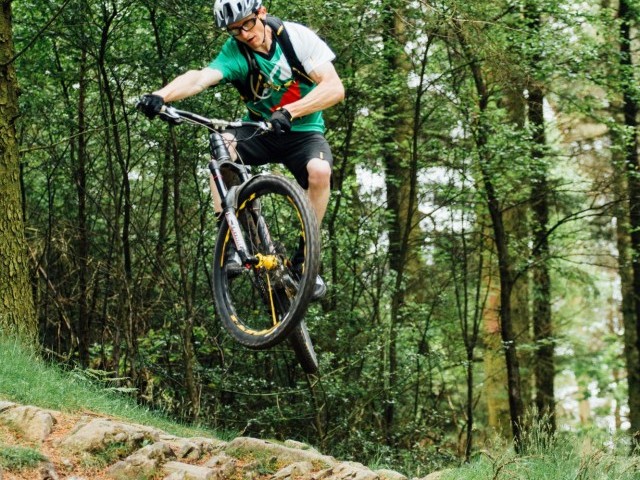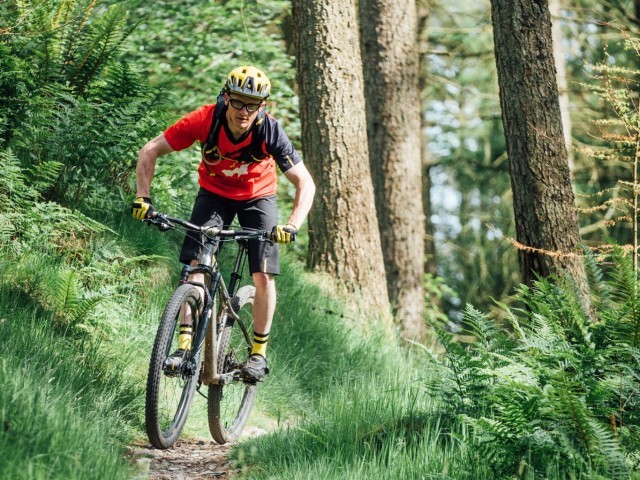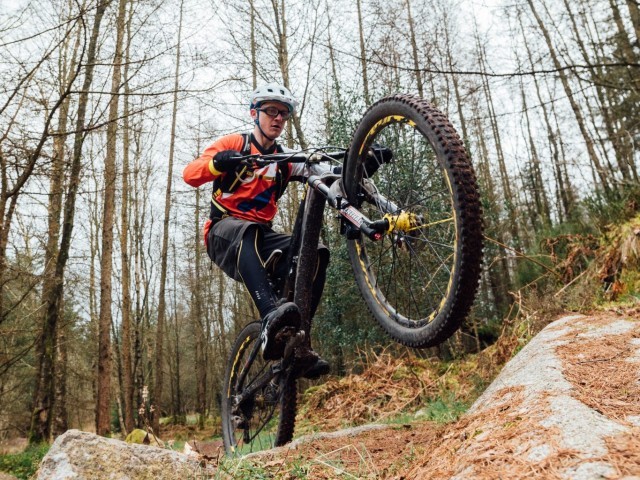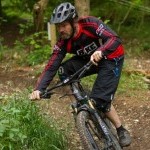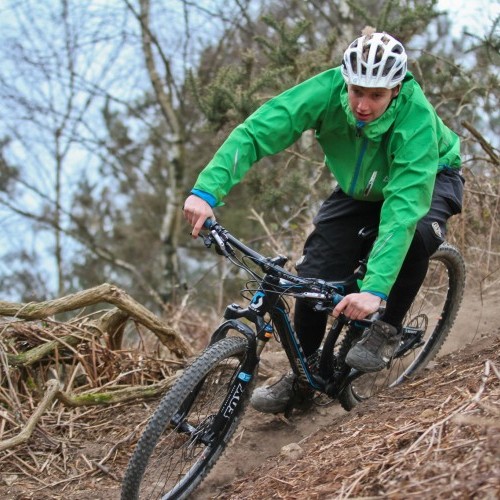
Speed Control
Technique / Skills
Introduction
Before you think ‘Oh, I am OK with my braking technique’ and flick on to the next article, STOP. Speed control is not simply a matter of the ability to apply the brakes and stay on the bike (although this admittedly is an essential technique).
The physical element of speed control is a far broader topic than that. As with all the physical skills that we have identified as building blocks in our skills model, a more detailed understanding of this skill will have a knock-on effect far beyond that which you might at first suspect.
Firstly ‘Speed Control’ is not just about slowing down, consider it more an issue of timing, an effective skill that will help bolster your psychological skills set, and the ability to be more in charge of proceedings both physically and emotionally.
Correctly understood and applied ‘Speed Control’ might better be described simply as ‘control.’ Control over the bike and control over the terrain. It helps you maintain your role as driver rather than being relegated to the position of a mere passenger.
Better understanding and application of Speed Control skills will allow you to keep your ‘thinking’ far enough ahead of your ‘doing.’ You will have time to carry out planned responses to terrain that are unconscious competencies. Your riding will be smoother, less of a battle and a long way from a series of panic based reactions linked together with moments of ecstatic disbelief that you ‘made it’ or painful realisations that you are not the rider you thought you were.
As with all of the skills that are the building blocks of ‘best practice’, speed control is intrinsically linked with the other elements. The more you polish and master this skill the more you will become a master of your own destiny and of the trail ahead.
For many, Speed Control can be one of the more counterintuitive and thus hardest skills to get right. More than any other skill Speed Control is susceptible to being undermined by failings in your psychological skills or weaknesses in the other elements of the physical skills set. It can be come a viscous circle. If you don’t apply the other physical and psychological elements correctly you will get engrossed in the ‘now’ leaving little time to think of what is important, i.e what is next. Your mind will not be able to deal with the situation. As a result you will ride with one thought paramount over all other considerations and skills available to you - 'am I at the right speed.' For most riders that will be restricted to a simpler thought still, “Am I / I am going too fast?”
To a certain extent the less you work on other elements that make up the whole, the more you will focus purely on Speed Control. The more that it becomes your sole concern the more likely you are to then apply this skill in the wrong way, at the wrong time. Rather than being driven by a knowledge that it is the right thing to do you will find yourself reacting with ‘fight or flight’ responses that are triggered by emotions rather than prior planning.
Clutching a handful of brake in a last ditched attempt to gain control (physical and/or emotional) does not constitute speed control but neither does simply letting go and putting your fate in the hands of some higher being. Both of these are simply panicking.
So what then is Speed Control, why is it so important to get right and why is it so dependent on the other elements?
Certainly one aspect of Speed Control is decelerating, but equally it could be controlling your rate of acceleration using the brakes, or choosing to accelerate by pedaling or pumping. Through this article and attached videos we will hopefully show you not only which is appropriate, but when to apply it. We will see how to rely less on it as a safety net as your other skills crumble and more how to use it to reinforce your other skills, combine with them and make your riding as a whole stronger and more technically correct. The videos will show how it applies out on the trail, the words look a little deeper at the relationship between Speed Control and the other elements.
Under-Rotation
In order to understand and master Speed Control it is important to revisit an underpinning theme that we have seen in previous articles is integral to maximising performance - Under-Rotation. Understanding that your mass is a driving force when it comes to either end of the physical spectrum of Speed Control is crucial. Your mass needs to interact with the bike correctly whether you are decelerating or accelerating. There is a whole Technique feature in Issue 2 dedicated to this underpinning theme that should be at the heart of your riding and we have subsequently looked at how it fits into many techniques and your riding as a whole. To recap, it’s a push bike. You don’t sit on top of it balancing precariously...or at least you shouldn’t. Your mass drives the bike. In order to do this heels should be dropped slightly and this should be reflected in your wrists. With your hips slightly behind your feet you can use your core mass to drive into and through the bike or ‘pump‘ the bike’. If you are not applying the brakes this will drive the bike on and accelerate it. If you pump into the bike as you brake you can increase the resistance of the tyres on the trail, cut through loose surfaces to terra firma and essentially use your body to have a greater input to speed control. You should not be relying purely on the mechanical elements of brakes and cranks when it comes to speed control. Whether you are slowing down or speeding up you should be making use of under-rotation.
Braking hard by simply grabbing a handful of brake in isolation wont slow ‘you’ down and could see you rotating forward rapidly contributing to the bike’s deceleration but only by virtue of you becoming the accelerating mass. It is no good the bike stopping fast if you don't. Utilising under-rotation brings the legs into play (bigger muscles designed to support you) and takes some pressure off the hands. When it comes to either braking or pumping to accelerate the legs can provide far more power than the arms, you can keep your weight more centred and allow the bike to rotate independently of you.
Body Position
Having identified the importance of under-rotation it will come as no surprise that body position is thus a crucial element to effective Speed Control. When either braking or accelerating both you and the bike are subject to forces. You will need to move your body independently of the bike. You may well have been advised to get your weight back as the terrain steepens or as you are applying the brakes. This is to a degree useful advice but is an over simplification and not strictly speaking true. Just stretching back as far as possible will leave your arms and legs locked out and there will come a point where you are unable to deal with any more rotation of the bike and no matter how far back you get there will be a point at which you are forced to rotate with the bike. Your body is subject to momentum and gravity. To deal with it you don't simply need to get back, but be in a position that you can brace yourself against these forces. Once you are clear of the saddle softening your legs and bending your knees will allow you to still reach the bars as the bike rotates away from you whilst simultaneously controlling your body’s forward rotation with your legs. If you go straight back and don't sink in down behind the saddle you will quickly reach your limits and in locking out will be too far back to control the front end. If you need to brake harder or the terrain steepens up further you will begin to rotate with the bike. You may well become the accelerating mass and as the bike pitches forward you will too. So don’t simply think ‘get back’, instead think ‘sink’.
Footwork
We dedicated a whole section to Footwork last issue so for this issue here’s a brief recap. When it comes to both braking or accelerating the bike by pumping, the feet are a crucial point of contact. Up on your toes you are balancing on top of the pedals - you will be inclined to be bounced forward every time the back wheel rolls over a bump, the gradient steepens or as the brakes are applied. Keeping your hips behind your feet keeps your legs in play. Only by dropping your heels as you drop into the bike will you take full advantage of under-rotation. As well as being key to keeping a good position on the bike, good footwork will promote better traction in corners. Dropping the outside foot and keeping your weight over it as a bike leans into a corner will minimise the chances of the wheels sliding out from under you. If you know that your footwork is good and traction is better you will be happy approaching faster and carrying more speed through corners - the less you will need to consider slowing down as the solution to getting round a corner. Good footwork will reduce your reliance on Speed Control. Focussing on Speed Control above everything else leads to over braking, braking in the section and tensing up or panic braking. Activating some positive thinking and considering your footwork will help you to correctly apply Speed Control and simultaneously reduce your reliance on it. If we are thinking about Speed Control as accelerating the feet also play their part, we will look at this when considering Energy Management and Speed Control.
Looking
Looking has a very direct effect on your perception of speed so getting your looking right will massively help when it comes to correctly assessing how and when to apply Speed Control. Looking just a few feet in front of you things appear to happen more rapidly. Everything seems to be happening more quickly, and essentially it is. If you see something late you have less time to react and your body tries to buy your brain crucial extra time to make decisions by slowing things down whether this is the right thing to do or not. By not looking through sections, whatever happens next is more of a surprise to you. It is as if the trail is constantly shouting “BOO!” This leads to riding in a heightened state of anxiety. The knock-on effect is tensing, tightening, fighting the bike and generally approaching the trail with more anticipation and in a far less proactive manner. Looking further ahead gives you the impression you are traveling more slowly. Perception is reality in this instance. You will be less susceptible to hitting the brakes through panic and decelerating where accelerating might be the better option.
If you see a jump or drop late, your initial reaction might be to dab the brake. This defensive, instinctive reaction although momentary is counter productive. The chances are that at that late stage you should be accelerating through the section preparing to pump the bike. The very last thing you want to be doing is to be slowing down in an unplanned manner with your weight (probably) rolling forward as you do so.
When it comes to correct application of Speed Control, there may be a need to either reduce or increase your speed but if you see things late your gut instinct is to buy time by braking jerkily rather than responding correctly. Identifying points where Speed Control should be applied should be done as early as possible. There are very definitely good places to brake before sections (or begin to accelerate). Being prepared for these early and giving yourself plenty of time to carry them out in a controlled manner relies on looking in the right way, to the right point, at the right time.
Entry / Section / Exit
By knowing a trail, or at least looking as far ahead down it as possible, you can more successfully apply Speed Control. Remember you need to be breaking down the trail into sections. Identifying entry points, by which time as much planning as possible needs to be done, you can modify your speed. Deceleration in the section itself is rarely a good thing. That is not to say you wont be using your brakes in the section but they should be used to moderate your rate of acceleration rather than be reducing your speed.
You do not want the gradient and gravity to be the factors controlling your speed - that should be in your hands. Through the exit point you can then adjust your speed ready for the next section. Final adjustments in the section may be required but these should not be isolated to speed control. You have numerous other skills in your riding arsenal. Rather than braking through a corner use better footwork, body positioning and looking to deal with the speed rather than reducing it. When the trail gets rough, simply slowing down will reduce the frequency and ferocity of inputs but applying better energy management skills by softening up, breathing and relaxing will have a more positive outcome. Braking is not an effective substitute for other physical skills and relying on it rather than perfecting other skills will hamper your progression.
Energy Management
As eluded to above Energy Management skills will offer an alternative option to simply reducing speed and therefore have a direct affect on your reliance upon the brakes. As well as an alternative consideration to speed control, Energy management skills will also play a part in speed control itself whether you intend speeding up or slowing down. Pumping into the bike you can accelerate it or when combined with applying the brakes enables you to brake harder and faster and gain traction on loose or soft surfaces. Here again correctly applying Speed Control relies on another skill.
The Psychology of Speed Control
Speed is a matter of personal perception, what is fast to one rider is positively pedestrian to another. Where all riders share common ground is how speed can affect their psychological skills. The brakes are the first point of call when riders start to lose their nerve. Its instinctive and intuitive to reduce your speed when you feel threatened. This is a fight and flight based response and as such needs to be controlled. There are very definitely times when you will see your speed as the definitive factor to successfully negotiating a section. Think beyond your speed and try to employ other skills. If commitment, concentration and confidence crumble you are likely to want to reduce your speed - even stop. There is a massive difference between applying speed control and just slowing down or stopping. Trying to stop on steep loose descents is hard, so rather than relying on your brakes alone, raise your level of commitment, look further ahead, soften up and breath (energy management), keep your shape (body position and footwork). If it is a drop or a jump the slower you go the more you will have to shift your weight to ensure your landing is correct but go too slowly and you may not even make the landing. By responding to your fears and worries rather than keeping them in check you will have more to do and actually make the situation harder to deal with. Correct application of the skill of Speed Control relies on avoiding flight and fight responses. The more you lose emotional control the more you will be likely to incorrectly apply the skill of Speed Control. It is easy to end up braking last minute and jerkily when in fact you should be accelerating, or trying to stop and get off rather than keeping commitment high and trusting in your ability.
Speed Control as a skill lies at the heart of good riding. Used incorrectly it will undermine the other physical and psychological skills that you possess. Practiced and applied correctly it will work with and compliment the other skills you have developed and be a positive attribute to your riding. Develop your Speed Control skill set and you will ride faster, more smoothly and more efficiently. Contrary to what you may at first think, good use of Speed Control will make you faster.
This technique article was in Issue 23 of IMB.
Related
By Richard Kelly
Richard Kelly has been riding bikes since forever, and teaching people to become better mountain bikers for over a decade. He’s always out in the Surrey Hills training riders, building trails and riding for himself whenever he gets the chance. His unique perspective on mountain bike technique has earned him fans the world over, with some speculating he is actually Jamiroquai or perhaps Jack Sparrow…









